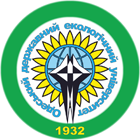Authors: M.Y. Romanchuk, K.S.Tkach, A.A.Polischuk, A. Kolisnyk
Year: 2015
Issue: 19
Pages: 114-119
Abstract
Introduction. The main source of centralized water supply in Odessa, Belgorod-Dniester, Illichivsk, Teplodar, Yuzhny and surrounding areas have Dniester water. The chemical composition of natural water determines in front him the story, that way, taken with water during their cycle. Dissolved substances in such water will depend, on the one hand, the composition of the substances with which it faced the other – on the conditions in which these interactions occur. To influence the chemical composition of water can the following factors: rocks, soil, living organisms, Liu activity Rights, climate, topography, water regime, vegetation and hydrodynamic conditions that natural and anthropogenic factors
Purpose of research – evaluate quality of river and drinking water depending on the water content r. Dniester (for typical water content during theyears1998-2012yy.) and its regulatory compliance of existing ISO and detecting changes of nutrients typical water content for years.
Results. An analysis of changes in ammonia nitrogen can be concluded that the maximum value of am-monia nitrogen concentration of 0.53mg/dm3(at MAC – 2mg/dm3) observed in an average water content year andin the winter -the most importance to the summer – they are reduced to fall – again in creasing. The presence of nitrate nitrogen can be explained as the presence of nitriteitrogen in distrait wastewater, precipitation and others. There is a relation of nitrate nitrogen hydrological regime. The trend of changes in the concentration of nitrate nitrogen in the maximum, minimum an daverage water content is very similar years
Conclusion. Following the evaluation, the quality. Dniester – intake by determining the grade for hygiene indicators the method ISO 4808: 2007 “Sources of centralized drinking water supply. Hygienic and environmental requirements for water quality and selection rules “for 1998 – 2012rr. the following conclusions: – Water quality district. Dniester – s.Mayaky intake in the period from 1998 to 2012 is improving. From 1998 to 2007 the water – as “good”, clean water with a slope to the class of “satisfactory” weakly contaminated acceptable quality, according to the characteristics of classes according to ISO 4808: 2007 “Sources of central-ized drinking water supply. Hygienic and environmental requirements for water quality and selection rules. ” From 2010 to 2012 – the water is “good”, pure water of acceptable quality.
Tags: drinking water; quality water supply; regulatory requirements
Bibliography
- Safranov T.A, Guseva K.D, Polishchuk A.A . Yakist dzherela tsentralizovanoho vodopostachannya Odeskoyi promyslovo- mistkoyi ahlomeratsiyi [The quality of centralized water supply source Odessa industrial agglomeration bridge].
- DSTU 4808:2007. «Dzherela tsentralizovanoho pit- noho vodo-postachannya . Hihiyenichni ta ekolohichni vymohy do yakosti vody y pravyla vyboru » [ISO 4808:2007 «Sources of centralized drinking water supply. Hygienic and environmental requirements for water quality and selection rules»].
- Palamarchuk M.M., Zakorchevna N.B. Vodnyy fond Ukrayiny : Dovidkoviy posibnyk [Water resources Ukraine: A Reference Guide]. Kiiv, 2001. 392 p.
- Rusev I.T. Del’ta Dnestra [Dniester Delta]. – Odessa, 2003. 766 p.
- Ekosistema Nizhnego Dnestra v usloviyakh usilennogo antropogennogo vozdeystviya [Lower Dniester ecosystem under intensive anthropogenic influence]. Kiev, 1990. 260 p.
- Metodyka vstanovlennya y yspolzovanye ekolohichnykh normativiv yakosti poverkhnevo vod sushi ta estuariyiv Ukrayiny [Method of installing and using environmental standards as surface water and estuaries Ukraine]. Kiev, 2001. 48 p.
- Kovalev N., Medinets V., Snigirev S., Derezyuk N. Otsenka kachestva vod vodnykh ob”yektov Nizhnego Dnestra [Evaluation of water quality of water bodies in the Lower Dniester]. 2009. 135 p.
- Hopchenko E.D., Hushlya O.V. Gidrologiya sushi s osnovami vodnykh melioratsiy [Hydrology land with the basics of water reclamation]. Leningrad, 1989. 296 p.



